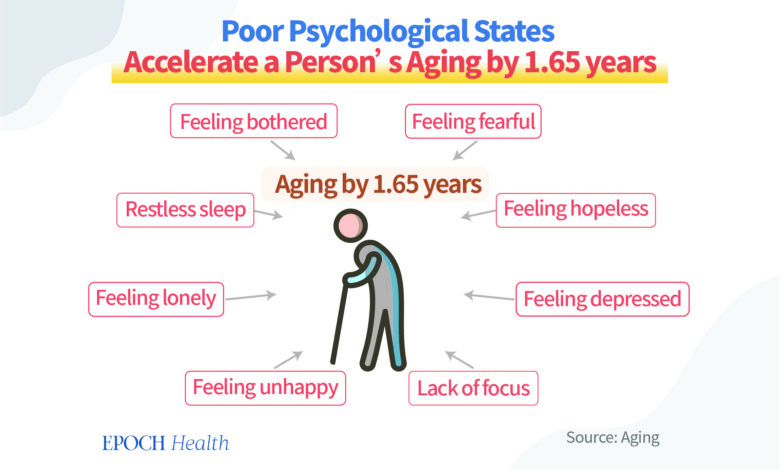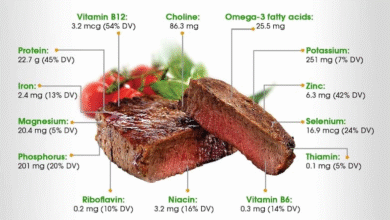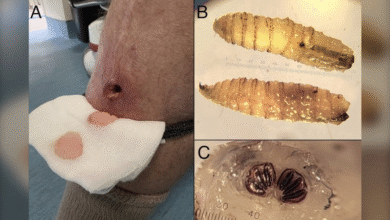Accelerated Aging: New Findings at Age 50 Unveiled

Accelerated aging is becoming a focal point in human aging research as scientists uncover the intricacies of how our bodies deteriorate over time. Recent studies have shown that the aging process acceleration tends to occur around age 50, triggering significant changes in organ and tissue health. Notably, blood vessels are especially vulnerable to these age-related diseases during this critical period. By analyzing a wide range of tissue samples, researchers are beginning to unravel the biological clock aging within our bodies, offering insights into how we might mitigate its effects. This vital work in tissue aging studies accelerates our understanding of the holistic nature of aging, urging us to rethink how we approach age-related health challenges.
The phenomenon of rapid biological decline as we age is often referred to using various terms such as senescence or rapid deterioration. Researchers are increasingly paying attention to the stages of midlife where age-related decline becomes more pronounced; this has illuminated key intersections between cellular aging and overall health. The shift in focus towards systemic aging rather than isolated organ failure highlights a need for comprehensive health strategies. By examining the interconnectedness of bodily systems, we can better understand the processes underpinning human longevity and resilience against age-related afflictions. This emerging perspective paves the way for innovative approaches to combat the effects of aging across the lifespan.
Understanding Accelerated Aging: Key Findings from Recent Research
Recent studies into the aging process have unveiled a critical turning point around age 50, where tissue aging notably accelerates. Researchers analyzed 516 samples from 13 different human tissues over fifty years and found a significant uptick in aging markers. This acceleration is particularly evident in blood vessels, crucial components that experience heightened susceptibility to age-related diseases as individuals approach middle age. Such insights into the biological clock aging provide an important context for understanding how and when the aging process shifts gears within our bodies.
The implications of this research extend beyond mere observation. With the identified age bracket being between 45 and 55, scientists suggest that interventions could be strategically timed to mitigate the impacts of accelerated aging. Understanding the timing and nature of these biological changes offers the potential to enhance human aging research, directing focus to holistic approaches that consider the intricate interplay between various body systems and their collective aging dynamics.
Biological Clock and the Acceleration of Aging: Insights and Implications
The concept of a biological clock is central to understanding the accelerated aging delineated in the recent Chinese study. As certain proteins and senokines act as markers for aging, their role becomes evident as they indicate the biological age of tissues. The study observed that between ages 45 and 55, there is substantial proteomic remodeling, particularly in the aorta. This peturbation strengthens the argument that aging is not an isolated phenomenon but a comprehensive process that transpires simultaneously across multiple organ systems.
The exploration of these biological markers illuminates potential pathways for non-invasive assessment of organ age through blood samples. This level of insight not only furthers our understanding of tissue aging studies but also equips researchers and healthcare providers with the tools necessary to develop targeted medical interventions. Early identification of accelerated aging could lead to preventative measures to lower the risks of age-related diseases, thereby improving overall health outcomes as individuals enter their later years.
The Connection Between Tissue Aging Studies and Age-Related Diseases
The alarming rate at which tissues age can have direct consequences for a range of age-related diseases, which makes tissue aging studies imperative for future human health. As noted in the research, there is a pronounced increase in aging indicators, particularly in key systems such as cardiovascular and immune responses, as individuals transition through middle age. Understanding these changes helps illuminate how accelerated aging impacts not only individual organs but also contributes to a cascade of health issues that may arise subsequently.
The research emphasizes how age-related diseases often result from interrelated factors stemming from biological clock aging. By investigating how these ailments correlate with the timing of neurovascular changes observed in older adults, scientists may unlock preventative strategies that address root causes rather than merely symptoms. This comprehensive understanding of tissue degeneration highlights the need for preventative interventions as part of a larger strategy to enhance human aging research and propel healthspan improvements—extending quality life as longevity increases.
Implications for Human Aging Research: A Holistic Perspective
The recent findings provide a nuanced understanding of the aging process that challenges traditional views focusing solely on individual organ aging. Instead, researchers propose a systemic perspective of aging that acknowledges the interconnectedness of various bodily systems. This approach enables a comprehensive evaluation of biological aging, opening avenues for research that examines how one organ’s deterioration can accelerate the decline in others, thereby enhancing our understanding of human aging.
This holistic vision not only sheds light on complex interactions within the aging body but also lays the groundwork for innovative research into treatments that address the collective aging process. By aligning tissue aging study findings with insights from biological clock aging, researchers can explore multifaceted interventions that could disrupt the acceleration of aging at any stage. The goal is to prolong health spans and reduce the societal burden of age-related diseases that come from the comprehensive aging patterns unveiled in this and similar studies.
Exploring the Role of Senokines in Accelerated Aging
Senokines, inflammatory signaling molecules produced by senescent cells, play a pivotal role in the aging process, particularly as they relate to accelerated aging. The recent study indicates that these biological markers can speed up tissue degeneration, posing significant challenges as individuals age. By understanding the functions of senokines, researchers aim to develop strategies that could mitigate their effects, thereby slowing the acceleration of not just physical aging but also the onset of age-related diseases.
Further research will undoubtedly provide insights into how these signaling proteins influence age-related biological systems. Their dual role as both indicators and modulators of the aging process emphasizes the need for targeted therapies that could inhibit their detrimental effects. By focusing on decreasing senokine levels or modulating their activity, scientists may pave the way for innovative approaches to prolonging youthfulness and enhancing the overall health of aging populations.
The Systemic Nature of Aging: Implications for Intervention Strategies
Understanding aging as a systemic process rather than an isolated condition has profound implications for intervention strategies. The research highlights that as tissues age together, their collective decline can lead to complex health challenges. Thus, any attempts to mitigate aging must consider the holistic nature of biological aging across various organ systems. Coordinated interventions could potentially target multiple systems simultaneously, improving outcomes and health resilience in aging populations.
Establishing a connection between systemic aging and intervention strategies means prioritizing research that explores broad-reaching effects on health. By recognizing how individual health determinants interact within an aging framework, practitioners can identify innovative routes to enhance well-being. Such a comprehensive approach could significantly alter the landscape of age-related healthcare, positioning intervention strategies as key to managing the age-dependent health decline.
Future Directions in Human Aging Research: Emphasis on Early Interventions
The findings from this research signal a paradigm shift in human aging research towards prioritizing early interventions. Acknowledging that the acceleration of biological aging begins around age 50 allows for the possibility of implementing preventative measures well before overt signs of aging manifest. This proactive stance could lead to tailored health strategies for individuals as they transition into middle age, fostering better health outcomes as populations age.
Future research should further explore how early detection and intervention might intersect with emerging technologies, such as genetic and biomarker analysis. By identifying aging processes at their nascent stages, healthcare providers can work collaboratively with researchers to develop tools and practices that empower individuals to maintain vitality and health throughout their lives. As our understanding deepens, so too does the opportunity to enrich the aging experience, transforming this natural process into an actionable journey toward sustained well-being.
Redefining Aging: Anthropological and Societal Perspectives
Redefining aging requires not only a scientific perspective but also an anthropological and societal one. As cultures evolve, so too do the implications of aging on social structures, support systems, and healthcare resources. This new understanding of accelerated aging challenges existing frameworks within society and advocates for a re-evaluation of how we care for older adults, taking into account the collective impacts of biological aging processes.
Social perceptions of aging can have profound effects on public health policies and community initiatives. Incorporating insights from recent findings into discussions about aging may inspire a cultural shift towards more inclusive and age-friendly environments. As societies grapple with the increasing number of older adults, addressing societal attitudes and persistent stigmas could enhance the quality of life for individuals navigating their later years, ensuring they remain integrated and valued within their communities.
The Future of Anti-Aging Research: Bridging Science and Life Quality
Anti-aging research has entered a new era, guided by groundbreaking insights into accelerated aging and the biological underpinnings of age-related diseases. The collective findings suggest that technologies and treatments aimed at slowing aging processes stand to benefit not just individual health but also overall life quality. As researchers harness knowledge from substance analyses and systemic aging studies, there exists an unprecedented opportunity to revolutionize the field of longevity.
Bridging science with practical applications entails a focus on interventions that can be implemented across various healthcare settings. By prioritizing research that emphasizes both efficacy and accessibility, researchers can ensure that advancements in anti-aging science translate into real-world benefits. The vision for future research is one that not only seeks to extend lifespan but also enhances the quality of life throughout all stages of aging, ensuring individuals can enjoy their later years with vitality and well-being.
Frequently Asked Questions
What causes accelerated aging in humans?
Accelerated aging in humans is influenced by various factors, including genetic predisposition, lifestyle choices, and environmental exposures. Research indicates that around the age of 50, the biological clock of aging begins to speed up, particularly in tissues and organs. This rapid aging is often linked to increased signs of age-related diseases and substantial changes in cellular structures.
How does aging process acceleration impact tissue health?
The aging process acceleration significantly impacts tissue health by leading to what researchers call ‘substantial proteomic remodeling.’ Between ages 45 and 55, tissues, especially in the cardiovascular system, display increased vulnerability to age-related changes, which can exacerbate conditions such as cardiovascular diseases and affect overall health.
What is the relationship between accelerated aging and age-related diseases?
Accelerated aging is closely associated with the onset of age-related diseases, which become more prevalent as the biological clock ages faster. Studies show that tissues, especially those in organs like the aorta, undergo rapid changes around the age of 50, increasing the risk of diseases including heart conditions and diabetes.
Can accelerated aging be diagnosed through blood samples?
Yes, researchers suggest that correlating tissue and plasma profiles can allow for non-invasive assessments of accelerated aging through blood samples. This method could enable early detection of aging markers and potentially inform targeted interventions to slow down the aging process and mitigate the risk of organ-related diseases.
What role do senokines play in accelerated biological clock aging?
Senokines are specific blood components that act as markers of accelerated biological clock aging. These molecules can signal the rate of aging and have been linked to increased inflammation and age-related diseases. Monitoring senokines may provide insights into an individual’s aging process and health status.
How can understanding accelerated aging help in human aging research?
Understanding accelerated aging is crucial in human aging research as it emphasizes the systemic nature of aging across different organs rather than viewing them independently. Insights from this research can lead to advanced strategies for intervention, helping to combat age-related diseases by focusing on holistic health rather than isolated treatments.
What interventions can slow down accelerated aging?
Interventions to slow down accelerated aging may include lifestyle modifications such as a balanced diet, regular physical activity, and stress management. Additionally, emerging research points to the possibility of medical treatments targeting specific biomarkers associated with accelerated aging, potentially leading to improved health outcomes.
| Key Points | Details |
|---|---|
| Accelerated Aging Phenomenon | Aging shows a turning point around age 50, where the process accelerates in the body. |
| Study Background | Conducted on 516 samples from 13 human tissues over five decades, highlighting acceleration, especially in blood vessels. |
| Age Range Impact | Significant changes occur between ages 45 and 55, affecting multiple body systems. |
| Proteomic Remodeling | Marked changes in the aorta make tissues more vulnerable to aging. |
| Holistic Approach | Aging should be viewed as a systemic issue rather than isolated to individual organs. |
| Role of Senokines | Certain blood components act as indicators of biological aging and may accelerate it. |
| Non-invasive Age Assessment | Linking tissue and plasma profiles could allow blood sample-based age evaluations. |
| Potential for Interventions | Findings may lead to early interventions against organ aging and diseases. |
| Research Implications | Highlights the complex nature of aging and systemic effects across organs. |
Summary
Accelerated aging represents a crucial turning point in the aging process, particularly evident around the age of 50. This new research emphasizes the need to understand aging not just as a byproduct of time but as a complex, multi-faceted process affecting the entire organism. By analyzing the proteomic changes and systemic implications of aging, scientists can pave the way for innovative interventions aimed at mitigating health risks associated with accelerated organ aging.




